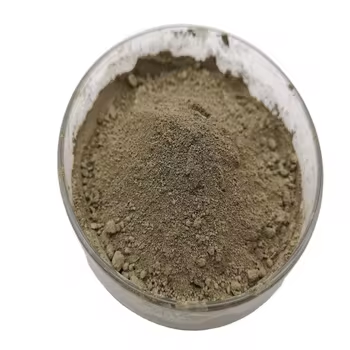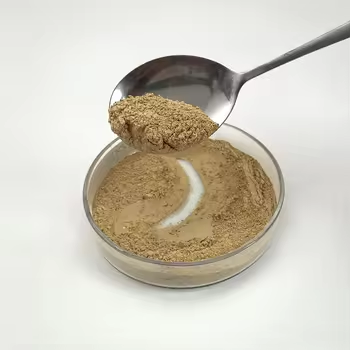1. Fundamental Properties and Nanoscale Behavior of Silicon at the Submicron Frontier
1.1 Quantum Confinement and Electronic Framework Makeover
(Nano-Silicon Powder)
Nano-silicon powder, made up of silicon particles with characteristic dimensions listed below 100 nanometers, stands for a paradigm change from bulk silicon in both physical behavior and useful energy.
While bulk silicon is an indirect bandgap semiconductor with a bandgap of around 1.12 eV, nano-sizing induces quantum confinement impacts that fundamentally modify its digital and optical residential or commercial properties.
When the bit diameter techniques or drops listed below the exciton Bohr distance of silicon (~ 5 nm), fee providers end up being spatially constrained, bring about a widening of the bandgap and the emergence of noticeable photoluminescence– a phenomenon missing in macroscopic silicon.
This size-dependent tunability enables nano-silicon to emit light across the visible range, making it a promising prospect for silicon-based optoelectronics, where standard silicon fails because of its poor radiative recombination efficiency.
Additionally, the boosted surface-to-volume proportion at the nanoscale enhances surface-related phenomena, including chemical sensitivity, catalytic activity, and communication with magnetic fields.
These quantum effects are not just academic inquisitiveness yet form the structure for next-generation applications in energy, sensing, and biomedicine.
1.2 Morphological Variety and Surface Chemistry
Nano-silicon powder can be manufactured in different morphologies, including round nanoparticles, nanowires, porous nanostructures, and crystalline quantum dots, each offering unique advantages depending on the target application.
Crystalline nano-silicon normally retains the diamond cubic structure of mass silicon however displays a greater thickness of surface problems and dangling bonds, which must be passivated to support the material.
Surface area functionalization– often accomplished through oxidation, hydrosilylation, or ligand attachment– plays a vital function in establishing colloidal security, dispersibility, and compatibility with matrices in composites or biological atmospheres.
For instance, hydrogen-terminated nano-silicon reveals high sensitivity and is vulnerable to oxidation in air, whereas alkyl- or polyethylene glycol (PEG)-covered bits display improved security and biocompatibility for biomedical use.
( Nano-Silicon Powder)
The visibility of an indigenous oxide layer (SiOₓ) on the fragment surface, also in marginal amounts, considerably affects electrical conductivity, lithium-ion diffusion kinetics, and interfacial responses, especially in battery applications.
Comprehending and managing surface chemistry is as a result essential for utilizing the complete potential of nano-silicon in sensible systems.
2. Synthesis Techniques and Scalable Fabrication Techniques
2.1 Top-Down Methods: Milling, Etching, and Laser Ablation
The manufacturing of nano-silicon powder can be extensively classified right into top-down and bottom-up approaches, each with distinct scalability, pureness, and morphological control features.
Top-down methods include the physical or chemical reduction of mass silicon right into nanoscale fragments.
High-energy sphere milling is a widely utilized commercial technique, where silicon chunks undergo intense mechanical grinding in inert environments, causing micron- to nano-sized powders.
While affordable and scalable, this method commonly introduces crystal issues, contamination from milling media, and broad bit dimension distributions, calling for post-processing filtration.
Magnesiothermic reduction of silica (SiO ₂) complied with by acid leaching is another scalable course, particularly when using all-natural or waste-derived silica resources such as rice husks or diatoms, offering a sustainable pathway to nano-silicon.
Laser ablation and responsive plasma etching are extra exact top-down approaches, capable of producing high-purity nano-silicon with regulated crystallinity, however at higher price and reduced throughput.
2.2 Bottom-Up Techniques: Gas-Phase and Solution-Phase Development
Bottom-up synthesis permits better control over particle dimension, shape, and crystallinity by building nanostructures atom by atom.
Chemical vapor deposition (CVD) and plasma-enhanced CVD (PECVD) enable the development of nano-silicon from gaseous precursors such as silane (SiH FOUR) or disilane (Si two H ₆), with criteria like temperature level, stress, and gas circulation dictating nucleation and development kinetics.
These techniques are particularly efficient for producing silicon nanocrystals installed in dielectric matrices for optoelectronic devices.
Solution-phase synthesis, consisting of colloidal paths utilizing organosilicon compounds, allows for the manufacturing of monodisperse silicon quantum dots with tunable emission wavelengths.
Thermal disintegration of silane in high-boiling solvents or supercritical liquid synthesis likewise yields top notch nano-silicon with narrow size distributions, appropriate for biomedical labeling and imaging.
While bottom-up approaches usually generate superior material top quality, they deal with difficulties in large manufacturing and cost-efficiency, necessitating recurring research into hybrid and continuous-flow procedures.
3. Energy Applications: Transforming Lithium-Ion and Beyond-Lithium Batteries
3.1 Role in High-Capacity Anodes for Lithium-Ion Batteries
Among one of the most transformative applications of nano-silicon powder hinges on energy storage, especially as an anode product in lithium-ion batteries (LIBs).
Silicon provides an academic particular capability of ~ 3579 mAh/g based on the formation of Li ₁₅ Si Four, which is almost 10 times greater than that of standard graphite (372 mAh/g).
Nonetheless, the huge volume development (~ 300%) during lithiation causes particle pulverization, loss of electrical call, and continuous strong electrolyte interphase (SEI) formation, causing fast ability fade.
Nanostructuring reduces these concerns by reducing lithium diffusion courses, accommodating strain better, and lowering crack likelihood.
Nano-silicon in the type of nanoparticles, permeable frameworks, or yolk-shell frameworks makes it possible for reversible cycling with boosted Coulombic efficiency and cycle life.
Commercial battery technologies now include nano-silicon blends (e.g., silicon-carbon compounds) in anodes to boost power thickness in customer electronic devices, electrical lorries, and grid storage systems.
3.2 Prospective in Sodium-Ion, Potassium-Ion, and Solid-State Batteries
Beyond lithium-ion systems, nano-silicon is being explored in emerging battery chemistries.
While silicon is much less responsive with sodium than lithium, nano-sizing enhances kinetics and allows restricted Na ⁺ insertion, making it a prospect for sodium-ion battery anodes, specifically when alloyed or composited with tin or antimony.
In solid-state batteries, where mechanical security at electrode-electrolyte user interfaces is essential, nano-silicon’s ability to undergo plastic deformation at tiny ranges minimizes interfacial anxiety and improves call maintenance.
In addition, its compatibility with sulfide- and oxide-based solid electrolytes opens avenues for safer, higher-energy-density storage remedies.
Research study remains to optimize interface engineering and prelithiation techniques to make the most of the longevity and efficiency of nano-silicon-based electrodes.
4. Emerging Frontiers in Photonics, Biomedicine, and Composite Products
4.1 Applications in Optoelectronics and Quantum Source Of Light
The photoluminescent properties of nano-silicon have rejuvenated efforts to establish silicon-based light-emitting gadgets, a long-standing challenge in integrated photonics.
Unlike mass silicon, nano-silicon quantum dots can exhibit effective, tunable photoluminescence in the visible to near-infrared array, allowing on-chip light sources compatible with corresponding metal-oxide-semiconductor (CMOS) innovation.
These nanomaterials are being incorporated into light-emitting diodes (LEDs), photodetectors, and waveguide-coupled emitters for optical interconnects and picking up applications.
Additionally, surface-engineered nano-silicon displays single-photon exhaust under particular issue setups, placing it as a possible platform for quantum data processing and safe and secure interaction.
4.2 Biomedical and Environmental Applications
In biomedicine, nano-silicon powder is getting interest as a biocompatible, eco-friendly, and non-toxic alternative to heavy-metal-based quantum dots for bioimaging and drug distribution.
Surface-functionalized nano-silicon fragments can be designed to target certain cells, launch healing agents in reaction to pH or enzymes, and give real-time fluorescence tracking.
Their degradation into silicic acid (Si(OH)FOUR), a normally occurring and excretable compound, reduces long-lasting toxicity concerns.
In addition, nano-silicon is being investigated for ecological remediation, such as photocatalytic degradation of toxins under noticeable light or as a decreasing representative in water therapy processes.
In composite materials, nano-silicon enhances mechanical strength, thermal stability, and put on resistance when incorporated into steels, ceramics, or polymers, particularly in aerospace and auto elements.
In conclusion, nano-silicon powder stands at the intersection of fundamental nanoscience and industrial innovation.
Its special combination of quantum results, high reactivity, and convenience throughout energy, electronics, and life sciences underscores its function as a key enabler of next-generation modern technologies.
As synthesis methods advancement and assimilation challenges relapse, nano-silicon will certainly continue to drive progress toward higher-performance, lasting, and multifunctional material systems.
5. Vendor
TRUNNANO is a supplier of Spherical Tungsten Powder with over 12 years of experience in nano-building energy conservation and nanotechnology development. It accepts payment via Credit Card, T/T, West Union and Paypal. Trunnano will ship the goods to customers overseas through FedEx, DHL, by air, or by sea. If you want to know more about Spherical Tungsten Powder, please feel free to contact us and send an inquiry(sales5@nanotrun.com).
Tags: Nano-Silicon Powder, Silicon Powder, Silicon
All articles and pictures are from the Internet. If there are any copyright issues, please contact us in time to delete.
Inquiry us

